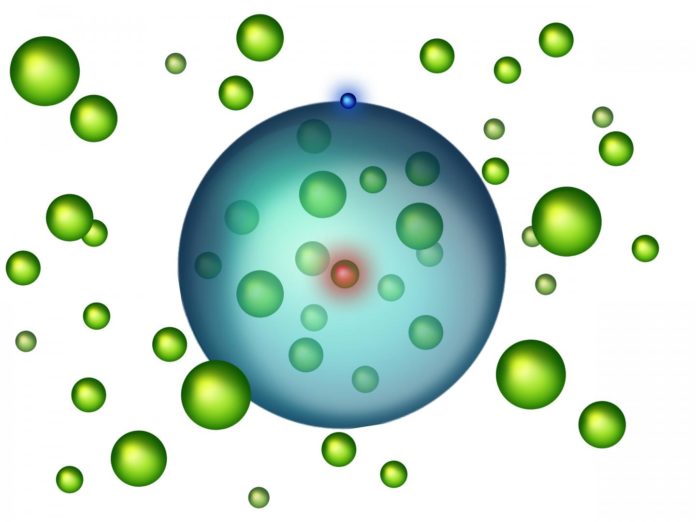An atom consists of protons, neutrons, electrons, and nucleus. Protons and neutrons are in the center of the atom, making up the nucleus. On the other hand, electrons revolve around the nucleus in orbits. But what is in between the nucleus and the electron?
There is plenty of space available between electron orbits the nucleus so that a giant atom can takes place with ordinary atoms. All these atoms shape a powerless bond, making another, exotic state of matter at cool temperatures, also known as “Rydberg polarons”.
Now, scientists at the TU Wien, Harvard University, and Rice University have explored his state of matter. They have presented their work in the journal Physical Review Letters.
There are two different fields of atomic physics that can be studied in extreme conditions only. Those fields are Bose-Einstein condensates and Rydberg atoms. A Bose-Einstein condensate is a state of matter created by atoms at ultracold temperatures, close to absolute zero. Rydberg atoms are atoms, in which one single electron is lifted into a highly excited state and orbits the nucleus at a very large distance.
Initially, a Bose-Einstein condensate was made with strontium iotas. With the help of a laser, energy was exchanged to one of these atoms, transforming it into a Rydberg atom with a large atomic radius.
The radius of the orbit, on which the electron revolves, is substantially bigger than the average distance between two atoms in the condensate. In this manner the electron does not only orbit its own atomic nucleus, various different atoms lie inside its orbit as well.
Relying on the radius of the Rydberg molecule and the density of the Bose-Einstein condensate, upwards of 170 extra strontium atoms might be encased by the huge electronic orbit. Such atoms rarely have an influence on this Rydberg electron’s path.
Prof. Shuhei Yoshida said, “The atoms do not carry any electric charge, therefore they only exert a minimal force on the electron. But to a very small degree, the electron still feels the presence of the neutral atoms along its path. It is scattered at the neutral atoms, but only very slightly, without ever leaving its orbit. The quantum physics of slow electrons permits this kind of scattering, which does not transfer the electron into a different state.”
“As computer simulations show, this comparatively weak kind of interaction decreases the total energy of the system, and so a bond between the Rydberg atom and the other atoms inside the electronic orbit is created. It is a highly unusual situation.”
“Normally, we are dealing with charged nuclei, binding electrons around them. Here, we have an electron, binding neutral atoms. However, the bond is much weaker than the bond between atoms in a crystal. Therefore, this exotic state of matter, called Rydberg polarons, can only be detected at very low temperatures. If the particles were moving any faster, the bond would break.”
Professor Joachim Burgdörfer at TU Wien said, “For us, this new, weakly bound state of matter is an exciting new possibility of investigating the physics of ultracold atoms. That way one can probe the properties of a Bose-Einstein condensate on very small scales with very high precision.”
